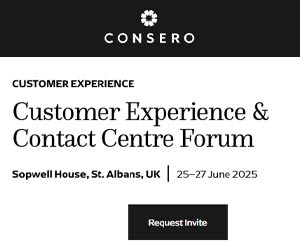Prior to his session at #SCSS15 on 30th April we asked Chris Geddes, Global Director, Social Media & Community Support at Microsoft, about his recent experiences and insights on the development of social customer service. As always, he gave a candid interview:
1. What would you say are the essential elements of a successful social customer service strategy?
The most important thing is to be goal orientated, and by that I mean business goal orientated. A social media team will not be taken seriously if its goal is to get a million “likes”, but a team that can demonstrate that £1m of costs have been saved, or £50k revenue generated through social activity has a seat at the top table with the other channels. This gives a license to invest, a license to make mistakes and learn and a weight to the social strategy itself. Without this, the strategy is yet another nice piece of utopian thinking.
2. Your team works across scores of social media channels in multiple languages. How do you keep track of customers and customer data?
We have a rudimentary CRM in place at the moment, so we can track conversations across multiple posts as a single conversation. Other than that, we do not currently have much in place, we have to move people to other channels when the information they need gets personal. Had you asked what we will have in place, that’s much more exciting!
3. What social CS strategy, technique or innovation has had the most positive impact for Microsoft Mobile customers?
Focussing on the long tail. Up to this point, companies have frequently quoted the 1% creators 9% contributors 90% lurkers pyramid as a reason to only focus on the 1%, but if you increase the effectiveness of the 1% by, say, 200%, you won’t even notice it compared to increasing the effectiveness of the 99% by 5%. The long tail is where the mega value is.
4. A recent survey found that only 26% of large organisations take social CS seriously. Does that surprise you? (Why/why not?)
No. Social media hasn’t been measured right and it hasn’t been aligned right. Start at the top of the organisation: What do shareholders want? Profit. Profit = revenue – cost. So, what does the CEO want? Increased revenue, decreased costs. What does the head of customer support want? Decreased costs. What does social media support deliver in a quantified way? Retweets? Likes? Views? Reach? It is all irrelevant to customer support. If Social Media departments start delivering measurable cost reduction, their boss gets a bonus and invests more in them, it makes sense really.
5. Your session at SCSS15 warns of ‘snake-oil’ in social CS. Please give us a flavour of what you’ll talk about.
The Snake Oil comes from people who think social media is different and that companies need to change to align to it, not that it needs to change to align to the business. Snake Oil is served up as Views, Likes, Retweets, Followers, Fans, or anything else that your CEO doesn’t understand how to communicate to the shareholders. I can buy followers on eBay, $15.95 for 275,000 followers, so how is demonstrating that your social media department of 5 has delivered 5000 new followers a month of any value at all? Snake Oil salesmen also tend to mark their own exam papers, so they will tell you how well they have done and use jargon and lovely infographics to distract that what they have done may have had some value, but it’s almost certainly less than it is made out to be.
Author: Jonty Pearce
Published On: 31st Mar 2015 - Last modified: 26th Feb 2019
Read more about - Archived Content


























